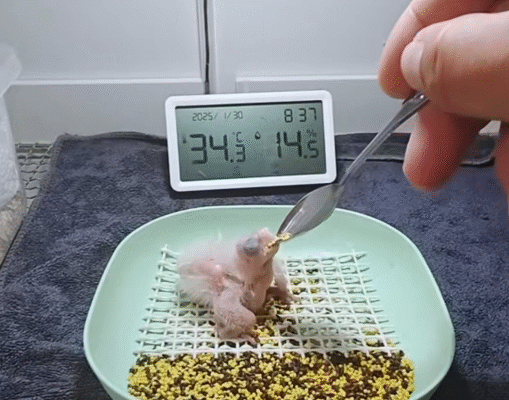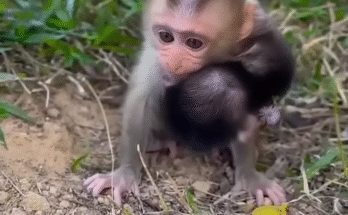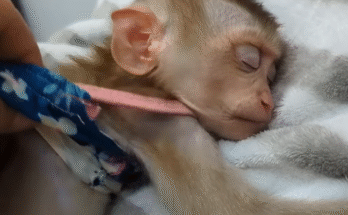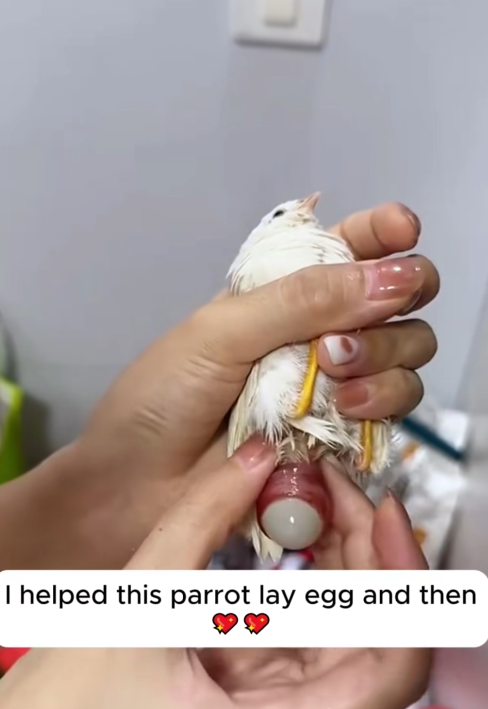
It started as an ordinary afternoon.
I was sitting on my porch, enjoying the soft breeze and sipping my tea, when I heard a frantic fluttering and squawking near the garden shed. I rushed over, and to my surprise, I found a parrot — bright green, trembling, her feathers ruffled and her eyes wide with pain. She was in distress. At first, I thought she was injured, but then I noticed her tail bobbing and her legs stiffening. Something was wrong.
That’s when I realized she was trying to lay an egg.
I had never seen a bird lay an egg before — let alone a wild parrot. I didn’t even know parrots came into our neighborhood. She looked scared, confused, and vulnerable. I couldn’t just leave her there. So I did the only thing I could think of: I gently scooped her up in a towel and brought her inside.
She didn’t resist much, which told me everything — she was exhausted.
I placed her on a warm towel inside a cardboard box and dimmed the lights. Then I reached for my phone and searched: “How to help a parrot lay an egg.” That’s when I learned something surprising. Parrots can suffer from something called egg binding — a dangerous condition where the egg gets stuck inside, and without help, the bird can die.
My heart sank.
I needed to help her — fast.
I boiled some water and filled a bowl with warm steam. Then I created a little steam tent by placing the parrot near the bowl with a light cover to trap the humidity. The goal was to relax her muscles and help her pass the egg naturally. She sat quietly, eyes half-closed, breathing heavily. I whispered softly to her the whole time, hoping my voice would calm her.
After about 20 minutes, she let out a soft squawk, stood up slightly, and with a final push — the egg came out. A smooth, creamy white egg, no bigger than a walnut, rolled gently onto the towel. I almost cried with relief.
She stared at it for a long time, then at me — her eyes softer, as if she understood I had helped her.
And that’s when everything changed.
The next morning, I expected her to fly away.
But she didn’t.
She stayed in the box, cooing softly at the egg, occasionally glancing up at me with what I can only describe as trust. I placed some fruits and seeds nearby, and she nibbled on them gratefully. Days passed, and she made no attempt to leave.
So I named her — Kiwi.
Kiwi became a part of my daily routine. Every morning, I’d check on her and her egg. She’d greet me with chirps and hops. I’d refill her food and water and open the box to let her stretch her wings. And slowly, Kiwi and I built a bond. She started sitting on my shoulder. She’d fly around the house, perch on my curtain rod, and mimic the sound of my phone alarm. She even copied me when I coughed.
And then, about two weeks later, the egg hatched.
I was there, watching, holding my breath as the tiny chick pecked its way out.
It was pink and bald and looked more like a dinosaur than a bird. But it was alive. Kiwi was an attentive mother, and I made sure she had everything she needed. I crushed cuttlebone into her food to strengthen her calcium levels and researched every step of baby parrot development. I became, unintentionally, a parrot caretaker.
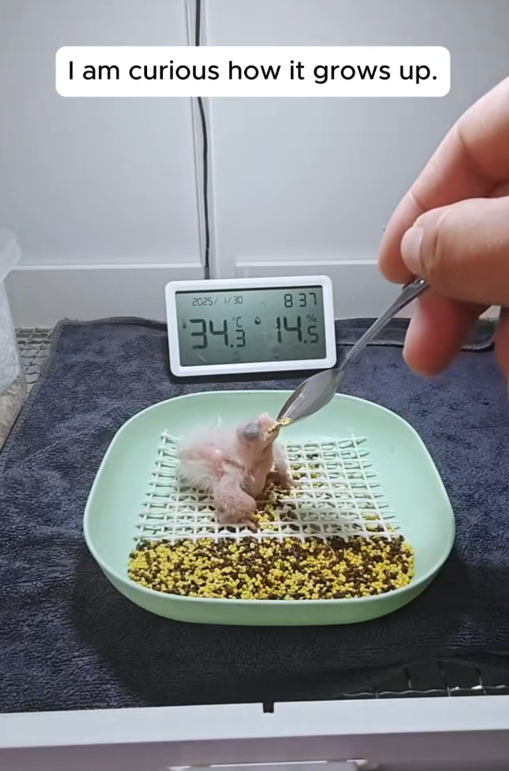
As the weeks went by, the chick grew feathers — soft yellows and greens like its mother. I called it Pip because of the tiny sound it made every time it saw me.
Now, you might think the story ends there — a rescued parrot, a baby chick, a happy ending.
But life had one more surprise in store.
One morning, a woman knocked on my door. She introduced herself as Maria, a volunteer at the local parrot rescue center. She had heard from a friend (who I’d posted the story to on social media) about the wild parrot I helped. Maria explained that Kiwi was not a native wild bird — she was a lost pet. A blue-crowned conure, to be exact. Someone had reported her missing three months ago.
My heart sank. Kiwi? A pet?
Maria asked to scan Kiwi for a microchip. I hesitated, unsure what I wanted to hear. But Kiwi’s safety came first.
Sure enough, Kiwi had a chip.
The original owner, a young woman named Dani, lived just 20 minutes away. When we called her, she cried on the phone. She had hand-raised Kiwi from a chick. One day, Kiwi had flown off during an outdoor training session and never returned.
A part of me didn’t want to let her go. I’d grown attached to her. But I knew — deep down — Kiwi belonged with Dani.
When Dani arrived to take her home, Kiwi chirped excitedly, as if recognizing her. It was a bittersweet moment. She gave me the warmest hug and thanked me over and over. She promised I could visit Kiwi anytime.
But here’s where the story takes an unexpected turn.
Dani, it turned out, ran an exotic bird sanctuary just outside town.
When she saw how I handled Kiwi’s care — and how Pip was thriving — she offered me something unexpected: a part-time position helping her raise rescued parrots. She said I had a “natural touch.”
I laughed. Me? A bird caretaker?
But I said yes.
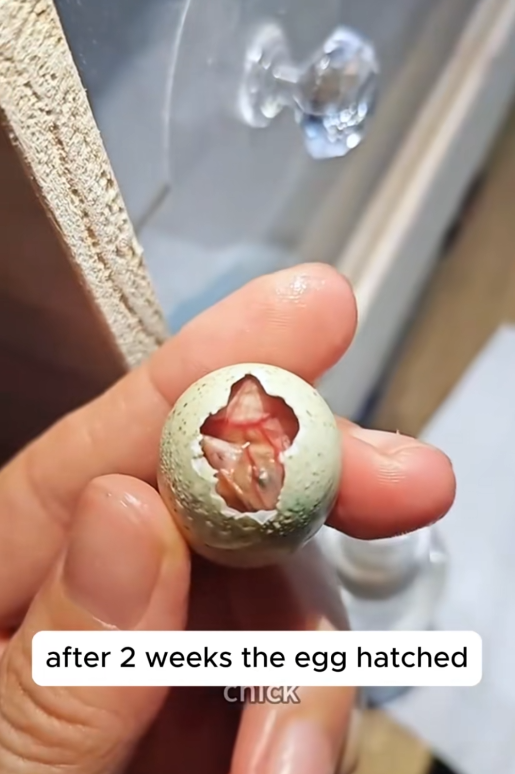
Today, I spend my mornings surrounded by parrots — macaws, cockatiels, conures — all with stories, all with personalities. Pip, now weaned and feathered, stays with me. Dani gifted him to me officially, saying it was only right.
From one small act of kindness, my life changed.
I helped a parrot lay an egg. And in return, I found a purpose, a calling, and a friendship I never expected. Funny how things work out.
Sometimes, helping a creature in need leads to something far greater than you imagined.
All it takes is a towel, a warm heart — and the willingness to care.
